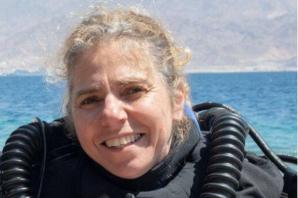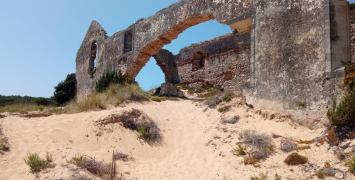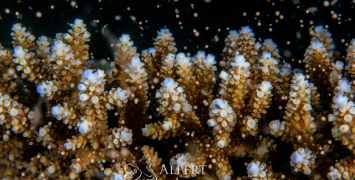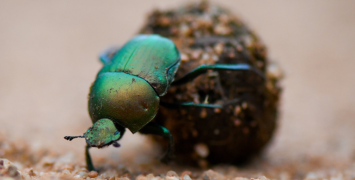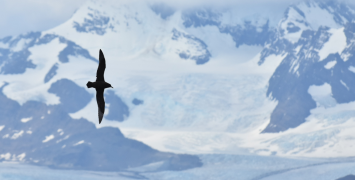New hope for coral reefs
Corals are one of the most beautiful and fascinating ecosystems in the world. However, due to rising sea temperatures, pollution and ocean acidification, they are also one of the most threatened. Pioneering work of ERC grantee Tali Mass shows that corals might be less vulnerable to some of these changes in their environment than previously thought, bringing new hope for their conservation.
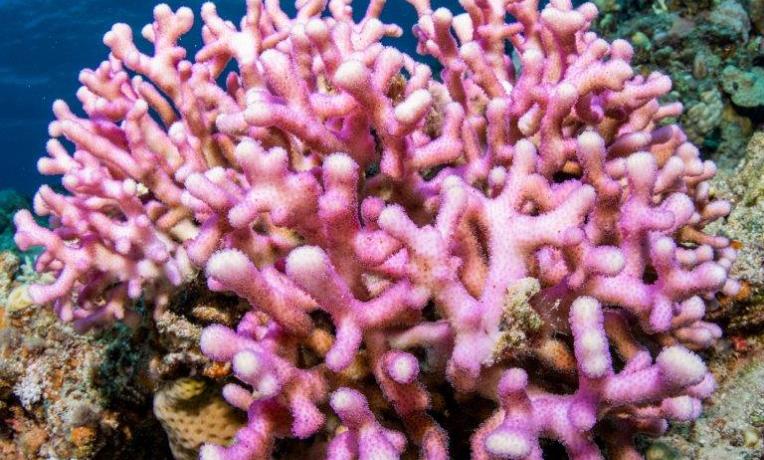
Corals occupy less than 1 % of the ocean floor, yet they are home to more than 25 % of marine life. This rich ecosystem can only survive in a narrow range of temperatures, salinity and light conditions, which makes it very vulnerable to pollution and climate change. For instance, temperature rise is the main reason behind coral bleaching events, currently so frequent that corals cannot recover between them.
Another factor threatening their survival are increasing levels of carbon dioxide in the atmosphere. Higher levels of this greenhouse gas in the air are causing more CO2 to be dissolved in the oceans too, which leads to ocean acidification. As anyone who has used vinegar to get rid of limestone in their kettle knows, acid dissolves calcium carbonate. So until now, the prevailing thought was that ocean acidification will make it much harder for corals to grow and build their calcium carbonate skeletons.
The pioneering work of ERC grantee Tali Mass, assistant professor at the University of Haifa, is challenging this view. By studying how exactly corals calcify, she found that they might have more control over this process than previously thought, bringing new hope for their conservation efforts.
Watching this video you are accepting Youtube cookies policy
How corals grow
Corals are a symbiosis between an animal that provides the shelter and unicellular algae that provide energy through photosynthesis. They are simple organisms that start their lives as larvae floating in the sea until they find the right place to settle. When they do, they start calcifying immediately and form colonies of inter-connected polyps that together build a reef.
Each polyp is made out of four layers of soft tissue and a hard skeleton on the outside. To form the skeleton, polyps inject organic material and carbonate ions from seawater into a very narrow space, called the ‘calcification site’.
Mass and her team are trying to understand how corals transport seawater ions through the coral tissue layers to reach the calcification site, what exactly happens there, and ultimately, how their skeleton is formed.
It all starts with baby corals
One of the aims of the project is to identify which coral proteins are involved in this process and understand their function. To this end, the team is looking at the coral before and after the larvae settles, in order to compare gene expression and protein composition and ultimately, identify what is actually starting the calcification process.
By using an array of advanced technologies the team discovered, both within the larvae and the adult tissue, small bladder-like bags (vesicles) containing calcium carbonate. Researchers believe that corals use these vesicles to transfer calcium ions to the calcification site. Their presence in the larvae indicates that these floating ‘coral babies’ are getting ready to start calcifying even before they settle.
Adaptations to acidic water
The discovery of these enclosed transportation vesicles also indicates that corals transport calcium from seawater in a highly controlled manner, which may offer them some protection from acidic conditions.
In order to test what exactly happens in acidic oceans, the team placed corals in water tanks with varying pH levels. They found that corals indeed adapt to acidic conditions by calcifying in a slightly different manner: they transport more organic material and less mineral into the ‘calcification site’.
This supports Mass’ hypothesis that coral tissue layers, together with the transportation vehicles, act as a protective barrier between the acidic water and their skeleton, and that ocean acidification may not affect corals as dramatically as generally thought. However, more research is needed.
‘We have proven that these vesicles exist and are now working hard on trying to show that this is indeed how these calcium ions are transferred to the site of calcification,’ Mass said. ‘We are building step by step our understanding of this mechanism.’
Birds of a different feather
Mass has been one of the pioneers in the study coral biomineralisation. ‘When we first started working on this topic and went to conferences, no one would understand us,’ she said. ‘We were seen as birds of a different feather in the community. But now we see that people are starting to be more and more interested in this topic.’
She said that the ERC grant not only helped her establish herself as a leader in this field, but also had a big impact on the careers of her team members: mostly PhD students and post-docs. ‘It allowed us to pursue unrestricted research and build new collaborations, resulting in high-impact journal articles for the whole team,’ she said.
BIO
Tali Mass is an assistant professor at the University of Haifa in Israel. Her research group focuses on elucidating the basic mechanism responsible for calcium carbonate precipitation in calcifying organisms, specifically corals. She completed her Ph.D. at the Hebrew University, and conducted her postdoctoral research at the Institute of Marine and Costal Science at Rutgers University in the USA.

